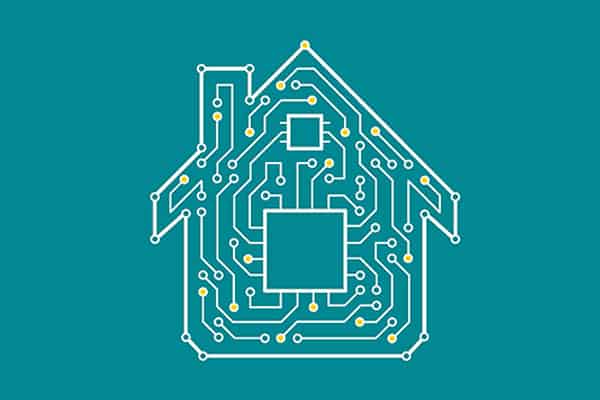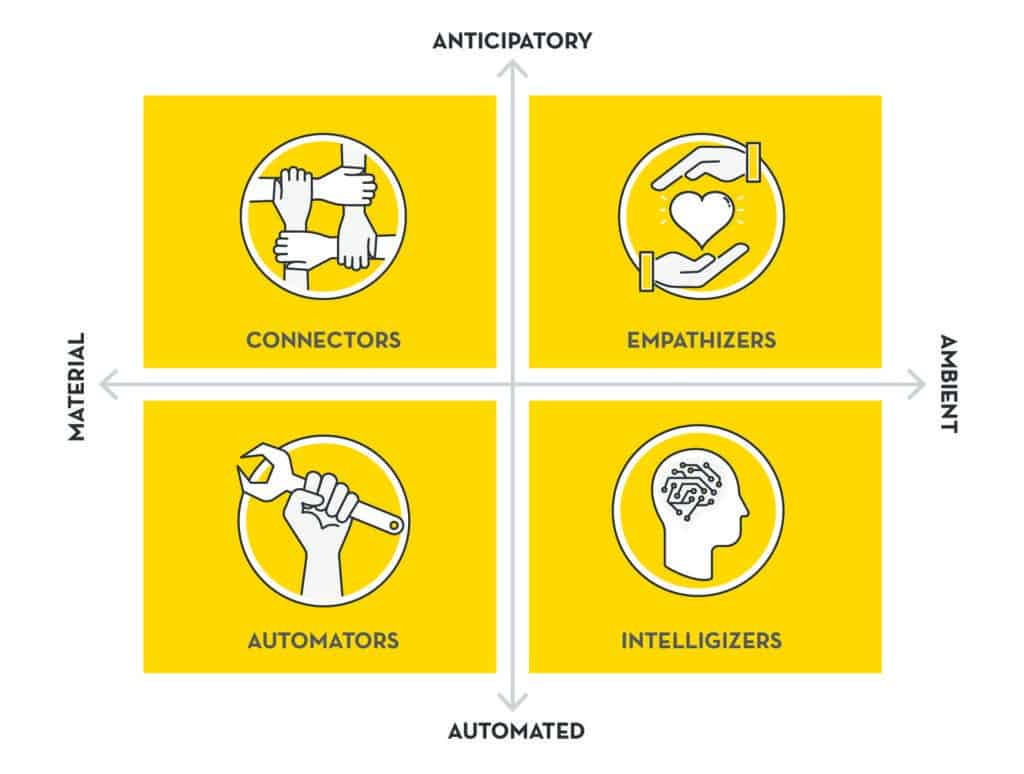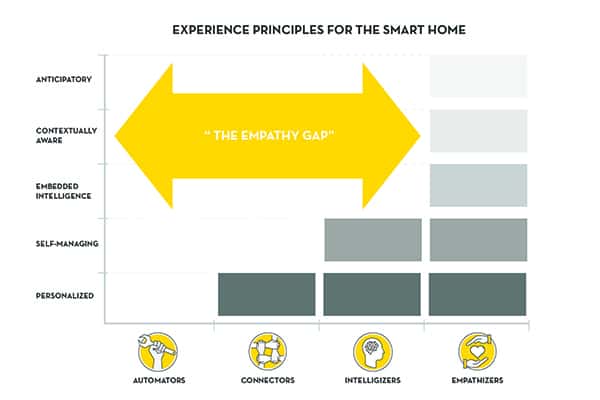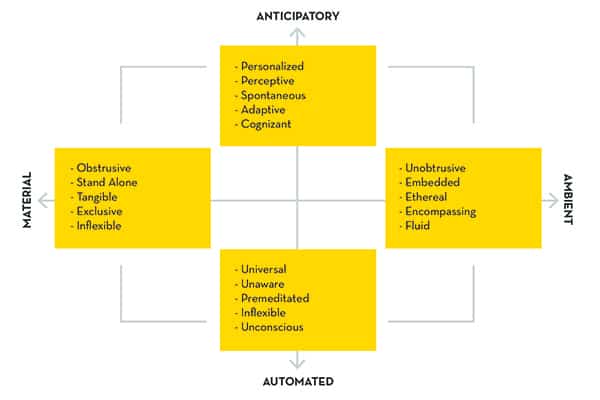Smart Product Design: Why The Smart Home Is Still Really Dumb, Part II
In Part 1 of this 2-part series, “Why the Smart Home is Still Really Dumb,” we told you that the so-called smart home and smart product design of today isn’t really what we consider “smart,” because it lacks the empathy required to be aware of user emotional needs.
Here, in Part 2, we’ll lay out our vision for the truly smart home and offer up principles to guide brands toward delivering this kind of smart home user experience — one capable of truly elevating the quality of life.
HOME IS WHERE THE HEART IS
That familiar maxim has never been more germane to the smart home. The bonds we have with our dwellings are genuinely emotional, and we think the word “smart” should better come to define how well your home meets your emotional needs, and as a result, your quality of life within it. That’s the foundation for our vision for the smart home of the future: A home that can genuinely sense our emotions, anticipate our preferences and learn how to deliver on our desires over time. Both intuitive and deeply empathetic, it will focus on the critical micro-moments of each day that compound together to create an immersive, engaging experience.
We see smart homes exhibiting intelligence in two meaningful ways: through social interactions and by the extent the system can adapt itself to its users and their environments.
This means the smart home will need to comprehend all of our emotions; from smiles, joy, amazement, surprise, humor, and excitement to signs of disappointment, confusion, indifference, boredom, anger, pain, and depression. In effect, your home will watch you feel, so it can deliver meaningful interactions that enhance your wellbeing. We also predict the smart home will develop zone-based sensory environments, curated ambiently to imbue a particular feeling. Imagine a bedroom that creates an atmosphere that enhances rest, reflection, conversation, and intimacy, or a kitchen that can strengthen our sense of taste or even curb our appetite.
5 PRINCIPLES OF THE TRULY SMART HOME
To realize this vision, we’ve identified five principles for smart product design and smart home devices that are necessary for making them truly intuitive and empathetic.
PRINCIPLE 1 – Contextually-Aware
To be smart, your home will need to recognize you and your given context and support how you navigate within your home at a particular instance in time, enhancing the experience of your living space.
PRINCIPLE 2 – Embedded Intelligence
To be smart, your home will need to seamlessly embed intelligence into the fabric of the home through smart materials that can track touch and movement, as well as store and process digital data.
PRINCIPLE 3 – Personalized
To be smart, your home will need to be tailored towards your every need in an instant, making short-term adjustments depending on your in-home activities to demonstrate the necessary level of intelligent behavior.
PRINCIPLE 4 – Self-Managing
To be smart, your home will need to continually adapt to the ever-changing context of the home environment by being self-managing.
PRINCIPLE 5 – Anticipatory
To be smart, your home will need to anticipate the desires of end users without conscious mediation, requiring systems capable of recognizing the emotions and resulting moods of their users.
BRIDGING THE EMPATHY GAP
Technologically, operating by these principles and achieving our vision for an empathetic smart home will require a network of sensors that connect the emotional, physical and virtual worlds to interpret human emotional states and respond accordingly. Facial expressions, body posture, and physical gestures will be captured unobtrusively while microphones will capture speech patterns, tone, and inflections. Other sensors will go beyond human perception to detect changes in skin temperature and electrodermal activity to funnel subconscious and emotional impulses to the home, so it can react moment-to-moment and reallocate resources as needed. Over an extended period, the home will need to detect long-term emotional behavior patterns in the individual which reside within it, as well as environmental conditions, and make adjustments that are genuinely life-enhancing.
From an individual product standpoint, emotional sensing and the ability to anticipate behaviors through being contextually aware will be key areas of development necessary to create empathy and elevate the quality of life through msart product design. We analyzed a cross-section of brands and products in the smart home space and developed a positioning model that captures a snapshot of the current smart home market and maps a trajectory for where we feel the smart home needs to be heading to indeed deliver on the promise of helping us to live more fulfilled lives.
From A Material to An Ambient Orientation
Brands with an orientation to “material” are focused on developing discrete products that inhabit the landscape of your home to provide intelligence and automation through a connected network of devices. Brands with an orientation to “Ambient,” however, are focused on being an invisible form of intelligence built into the fabric of the home. Focused on your own personal context and wellbeing, they are developing non-intrusive mechanisms of interaction that are aware of your presence and context, and are sensitive, adaptive and responsive to your needs, habits, gestures, and emotions.
From An Automated to An Anticipatory Orientation
A brand with an orientation to “automated” is focused on controlling predictable, mundane and habitual home functions automatically and remotely through programming and scheduling. A brand with an orientation to “anticipatory” moves beyond automation and is focused on making the environment around you intelligent by pulling data from your habits, gestures, and emotions to make decisions for you, without you ever having to ask.
How are your brand and products currently positioned? And how can you shift your orientation toward the smart(er) home and make your next offering truly smart?
We believe it starts with these principles and developing an ideal user experience that is capable of delivering on all five.
Remember, a smart home and smart product design should be concerned with our wellbeing and elevate the quality of life, and that means having empathy. The home has always been the locus of human development, and with new technology, we continue to scale Maslow’s hierarchy of needs within our own four walls from the spiritual to the intellectual and now to genuine emotional fulfillment. How the smart home anticipates and responds to our emotional state is the bleeding edge of its evolution.
Missed Part One? No problem, you can read it here.









